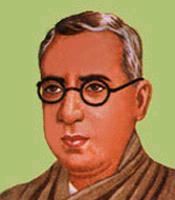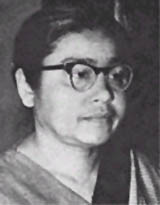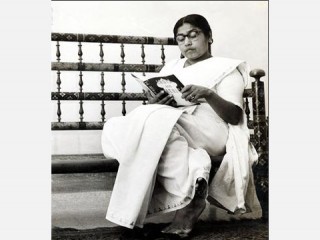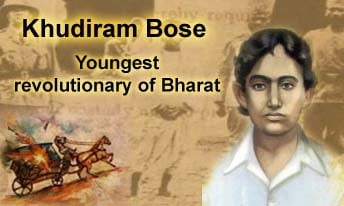skip to main |
skip to sidebar


 Born: November 7, 1858
Born: November 7, 1858
Died:May 20, 1932
Achievements:: With the other two members - Lala Lajpat Rai and Bal Gangadhar Tilak - from the Lal Bal Pal team, Bipin Chandra Pal doled out a number of extremist measures like boycotting goods made by British, burning Western clothes and lockouts in the British owned businesses and industrial concerns to get their message across to the foreign rulers of India.
Bipin Chandra Pal was a teacher, journalist, orator, writer and librarian. But above all, he was the one of the three famous leaders called "Lal Bal Pal" who comprised the extremist wing of the Indian National Congress. It was these three leaders who started the first popular upsurge against British colonial policy in the 1905 partition of Bengal. This was before Mahatma Gandhi had entered the fray of Indian politics. Bipin Chandra Pal recognized the positive outcome of the British kingdom, but at the same time upheld India's federal idea.
Read on about the biography of Bipin Chandra Pal, who was born on 7 November 1858 into a wealthy Hindu family at Habiganj, which is now in Bangladesh. He was a staunch radical in both public and private life. He was also among the first who openly rebuked Mahatma Gandhi and his followers because they sought to reinstate the current government with no government or by the priestly tyranny of Gandhiji. It was, however, his coalition with pan-Islamism during Khilafat movement due to which he was cast off from the Congress till his death in 1932.
With the other two members - Lala Lajpat Rai and Bal Gangadhar Tilak - from the Lal Bal Pal team, Bipin Chandra Pal doled out a number of extremist measures like boycotting goods made by British, burning Western clothes and lockouts in the British owned businesses and industrial concerns to get their message across to the foreign rulers. Later on during the course of his life history, Bipin Chandra Pal came in contact with prominent Bengali leaders like Keshab Chandra Sen and Sibnath Sastri, but not as one looking for a teacher for guidance. Pal died in the year 1932.


 Born: June 25, 1908
Born: June 25, 1908
Died: December 1, 1974
Achievements:: Sucheta Kriplani was a great freedom fighter of India. She was the first woman to be elected as the Chief Minister of a state in India. In this article, we will present you with the biography of Sucheta Kriplani, an important personality who has made an immense contribution in fighting for the freedom of India.
Early life
Sucheta Kriplani was born to a Bengali family in the Ambala city. Her father S.N. Majumdar was a nationalist of India. Sucheta took education from Indraprastha College and St.Stephen's College in Delhi. After completing her studies, she took the job of a lecturer in the Banaras Hindu University. In the year 1936, she tied her wedding knots with a socialist Acharya Kriplani and joined the Indian National Congress. Read on to know the complete life history of Sucheta Kriplani.
Sucheta was greatly inspired by the works of Mahatma Gandhi and in 1946 she joined the Kasturba Gandhi Memorial Trust as Organizing Secretary. In her later years, she started working with Gandhi Ji. She was actively involved in Quit India Movement and the partition riots. She also worked to combat the sufferings of Indian people. In 1946, she went with Gandhi to Noakhali and there she became the real mother of the victims of atrocities. She also got elected to the Constituent Assembly and sang the national song in the Independence session of Constituent Assembly on August 15, 1947.
Even after independence she had not stopped working for the weaker sections of the society and was greatly involved in the upliftment of Indians. In 1952 and 1957, she was elected as the member of Lok Sabha and had also served as the Minister of State. She was the first woman who was appointed as the Chief Minister of Uttar Pradesh in 1963.
Due to ill health Sucheta took retirement in 1971 and on December 1, 1974 she died of a massive heart attack.
She came into the Indian historical scene during the Quit India Movement. Sucheta worked in close association with Mahatma Gandhi during the time of partition riots. She went along with him to Noakhali in 1946. She was one amongst the handful women who got elected to the Constituent Assembly. She became a part of the subcommittee that was handed over the task of laying down the charter for the constitution of India. On the 15th August, 1947, i.e. the Independence Day, she sang the national song Vande Mataram in the Independence Session of the Constituent Assembly.
During the post Independence period, she was instrumental in politics in U.P. She was elected to the Lok Sabha in the year 1952 and 1957. She also served as the Minister of State for Small Scale Industries. In the year 1962, she was elected to the U.P Assembly. In the year 1963, she became the first woman to hold a prestigious position of the Chief Minister of Uttar Pradesh. During her long tenure of work, one of her biggest achievements has been the effective handling of the 62 day long strike by the state employees. In the year 1971, she took retirement from the politics and went into seclusion. This prominent personality died in the year 1974.


Tatia Tope, like other freedom fighters, was one of the great heroes who fought courageously for India’s freedom in 1857. He was born in 1814 in a village Yeola in Maharashtra. His father Pandurang Rao Tope shifted with Peshwa to Bithur. Tantia and the adopted sons, Nana Sahib and Maharaja Madhav, of Peshwa became good friends. All his loved ones called him Tatia because he always used to wear a hat that was gifted to him by Peshwa.
Tatia moved his first step against the British in 1851, when Lord Dalhousie deprived Nana Sahib of his father’s pension. In May 1857, he joined the political movements and established Nana Sahib’s authority. Britishers were trying to grab everything- the wealth, kingdom and the whole empire of the country. This became the biggest reason of discontent and revolt. He occupied Kanpur and then shifted to Kalpi to join Rani Lakshmi Bai to occupy Gwalior. Unfortunately, they lost the battle, Rani was killed and Britishers expanded their rule in Gwalior. After losing, he collected a huge force to fight against Britishers and was successful in capturing many forts of India. In Kalpi, he had established a center to manufacture arms. When he came to know that Britishers are short of resources, he took advantage of it and confronted Kanpur. Altogether, he fought 150 battles.
Nana Sahib's forces attacked the British entrenchment in June, 1857. General Wheeler's contingent incurred heavy losses as a result of successive bombardments, sniper fire, and assault. The slow supplies of food, water and medicine added to the misery of the British Forces who decided to surrender, in return for a safe passage to Allahabad. Nana Sahib agreed to this and made arrangements as best as he could. At the Satichaura ghat, rebel sepoys not under Nana Sahibs command attacked the departing British troops to settle old scores. General Wheelers men were either killed or captured. The surviving British women and children were moved from the Savada House to Bibighar ("the House of the Ladies"), a villa-type house in Kanpur. British retaliation occurred as Company forces started approaching Kanpur, and Nana Sahib's bargaining attempts failed (in exchange for hostages). Nana Sahib was informed that the British troops led by Havelock and Neill had indulged in violence against Indian villagers and were continuing with this violence as a 'tactic' .Nana Sahib, and his associates, including Tatya Tope and Azimullah Khan, debated about what to do with the captives at Bibighar. Some of Nana Sahib's advisors had already decided to kill the captives at Bibighar, in retaliation for the murders of Indians by the advancing British forces. Some sepoys were ordered to kill the women and children who were being held, but they refused. The task of the slaughter was carried out by two or three butchers from the town aided by others unknown. Three women and three children survived by hiding under the corpses of their friends. When discovered they were thrown alive into a well along with the deceased. The details of the incident, such as who ordered the massacre, are not clear as no 'real' records exist.

After losing Gwalior to the British, Tope launched a successful guerrilla campaign in the Sagar and Narmada regions and in
Khandesh and Rajasthan. The British forces failed to subdue him for over a year. He was, however, betrayed into the hands of the British by his trusted friend Man Singh, Chief of Narwar, while asleep in his camp in the Paron forest. He was defeated and captured on 7 April 1859 by British General Richard John Meade's troops and taken to Shivpuri where he was tried by a military court.
Tope admitted the charges brought before him saying that he was answerable to his master Peshwa alone. He was executed at the gallows on April 18, 1859. There is a statue of Tatya Tope at the site of his execution near the present collectorate in Shivpuri town in Madhya Pradesh.
Shri Tatya Tope was not executed as per the research, truth and facts unearthed. the man who was executed instead of Tatya Tope was either Sujan Singh Subedar by one version or Narayan Rao Bhagwat by other version.







Khudiram Bose was born on 3rd Dec 1889 in Habibpur, Medinipur to Laxmipriya Devi and Troilokyanath Bose. The Bose couple had yearned for a male child but unfortunately did not live long enough to enjoy their happiness. They unexpectedly died when Khudiram was just six. The boy's elder sister Anurupadevi and his brother-in-law Amritalal had to shoulder the responsibility of bringing him up. He had to move on to Tamlook where he was admitted to Hamilton school. Like any other boy he was interested in reading detective novels and loved to play the flute. It was in his school days that he was inspired by the activists, Satyendranath and Gyanendranath Bose who headed a secret society to campaign and fight against British supremacy.
A born patriot, even at the age of seven or eight years, Khudiram Bose thought, 'Bharat, our country is great. Our ancestors say that this has been the home of knowledge for thousands of years. Why, then, are the red-faced British here? Under them, our people cannot even live as they wish. When I grow up I must somehow drive them out.'
These thoughts ruminated in his mind all day. Thus whether he read a book or sat down to eat he would see a red-faced, green-eyed Englishman glaring at him. This caused strange pain to his heart.
Even at that tender age, Khudiram had thought so deeply about the country's freedom. But how was he going to achieve it ? This was haunting him all the time. How could he perform his duty unto the country successfully?
When engrossed in this, one day Khudiram heard the cry 'Vande Mataram (I salute You O Motherland)' and 'Bharat Mata Ki Jai (Victory to Mother India)’. He was thrilled by these cries, his eyes glowed and he felt elated.
Khudiram had always lived a virtuous and generous life. Since childhood he was fond of the sacred words of Vande Matram and in later years got inspired by the notions of karma and norms of Bhagvad Gita. During the partition of Bengal, discontent and anger against the Britishers compelled him to get involved in revolutionary activities. He was resolved to free India from the rule of British Empire. To learn more about the revolutionaries and their activities he joined Jugantar – the party of revolutionaries.
Bose, at the age of 16, threw the first bomb over the British who were crushing India. He had planted these bombs near the police station where many officials were killed. Further, he was arrested for placing a series of bomb but that was not the end. He along with his friend again planned to throw a bomb to assassinate the Chief Presidency Magistrate Kingsford who was known to make brutal and blatant judgments against freedom fighters.
Khudiram was arrested on the charges of bomb attack and was sentenced to death on August 11, 1908. He died with the holy book Bhagwad Gita in his hands and amiling with the slogan Vande Matram on his lips.
 A trial was carried out for two months on this Muzaffarpur bombing and other charges of bombing carried out by him. Although the leading Calcutta advocate Narendra Kumar Basu defended Khudiram's actions in defence of his motherland to his best, Khudiram was sentenced to death for the murder of women and children. The sentence was carried out, and he was hanged on August 11, 1908. Legend says that as he was hanged he was still smiling.
A trial was carried out for two months on this Muzaffarpur bombing and other charges of bombing carried out by him. Although the leading Calcutta advocate Narendra Kumar Basu defended Khudiram's actions in defence of his motherland to his best, Khudiram was sentenced to death for the murder of women and children. The sentence was carried out, and he was hanged on August 11, 1908. Legend says that as he was hanged he was still smiling.
 Not only did Khudiram himself became immortal, but he also inspired others by his sacrifice, to become immortal. In course of time, thousands of young men and women followed in his footsteps. While Kingsford had to quit his post, the British had to quit Bharat itself.
Not only did Khudiram himself became immortal, but he also inspired others by his sacrifice, to become immortal. In course of time, thousands of young men and women followed in his footsteps. While Kingsford had to quit his post, the British had to quit Bharat itself.

















